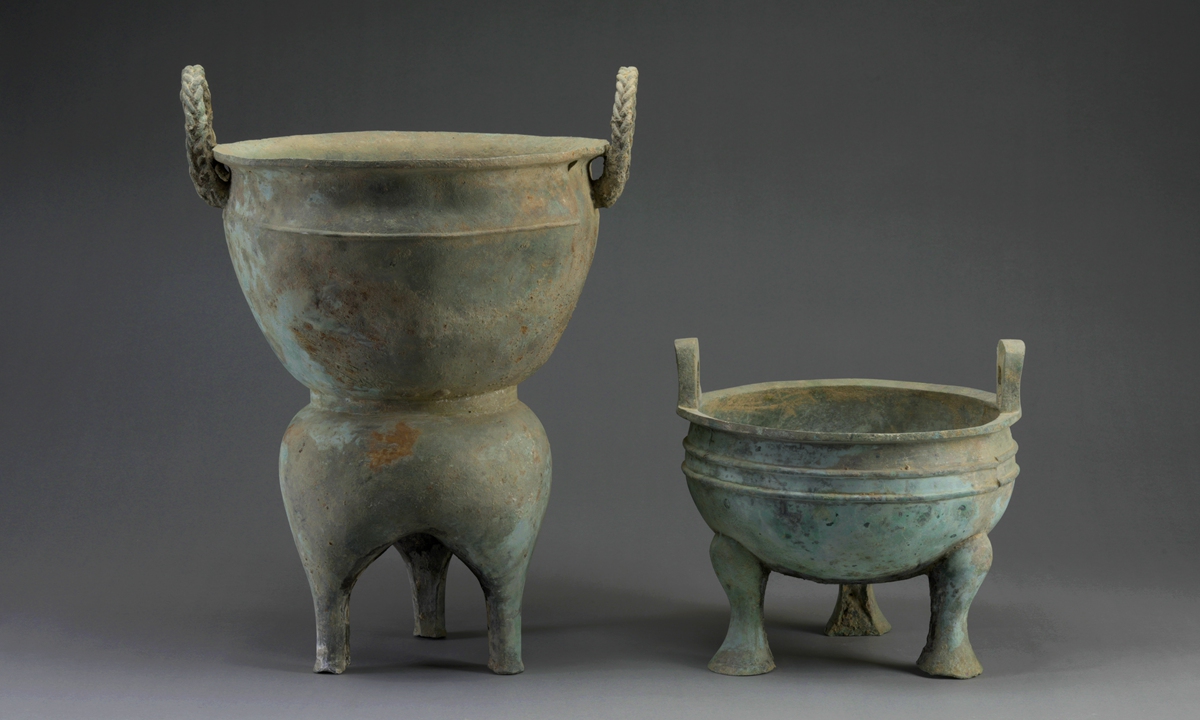
Cultural relics unearthed from the tombs Photo: Courtesy of Shaanxi Academy of Archeology
The Xi'an airport customs in Northwest China's Shaanxi Province recently seized a total of 494 prohibited Chinese cultural relics dating from the Han (206 BC-AD 220) to Qing (1644-1911) dynasties during outbound inspections.
According to China Youth Daily on Friday, customs officers at the outbound inspection site noticed an unreported checked baggage while supervising outbound flights. Upon inspection, it was found that the checked baggage contained a total of 672 cultural relics, including glazed bowls, bronze mirrors, and ancient coins, which were not declared to the customs.
After the report by the Shaanxi Provincial Cultural Relics Appraisal Center, it was determined that 494 items were general cultural relics on China's list of items prohibited from being exhibited abroad. These included glazed bowls, bronze mirrors, bronze smoking pots, ancient coins, and blue and white porcelains from various dynasties such as Han, Tang, Song, Yuan, Ming, and Qing, spanning a wide range of time and categories.
In order to prevent the loss of precious cultural relics, China's authorities have issued several batches of prohibitions on the export of cultural relics in recent years.
In May of last year, the National Cultural Heritage Administration (NCHA) issued a notice restricting the export of works by deceased modern artists after the Qing Dynasty. According to the notice, works by modern masters such as Feng Zikai and Qi Baishi, totaling 41 names, are strictly prohibited from leaving the country, while some representative works of another 158 individuals are also restricted from export. These categories cover types of works, including ceramics, sculptures, fans, textiles, seals, smoking pipes, and lacquerware, created after 1911.
According to the country's cultural relics protection law, criminal responsibility shall be pursued according to the law if the exportation constitutes a crime. If the smuggling behavior does not yet constitute a crime, customs will impose penalties in accordance with relevant laws and administrative regulations.
China is determined to crack down on cultural relic crimes within the country. According to data previously released by the Ministry of Public Security with NCHA in 2021, more than 26,000 stolen cultural relics were recovered across the country in one year.
In June of this year, a public report showed that the Beijing Customs Anti-Smuggling Bureau recovered two smuggled bronze-gilt Buddha statues from the Ming Dynasty from Hong Kong.
The effort is not just a domestic move. Since January, China and the US have jointly announced the extension of the validity period for a governmental memorandum of understanding (MOU) aimed at preventing the illegal entry of Chinese cultural relics into the US. This collaborative effort, effective this Sunday, seeks to enhance crackdowns on relic smuggling through international cooperation.
"The extension holds great practical significance and exemplary value for the world, as the US is an important market for cultural relics, and China is one of the countries that boast fruitful cultural relics globally," Huo Zhengxin, a law professor at the China University of Political Science and Law, told the Global Times.




